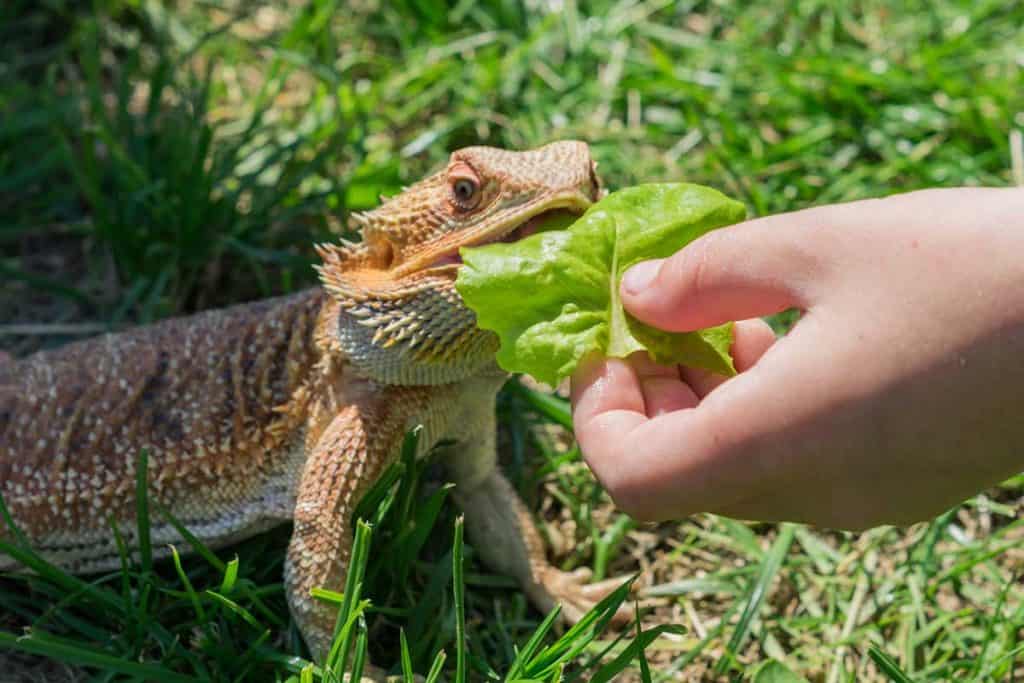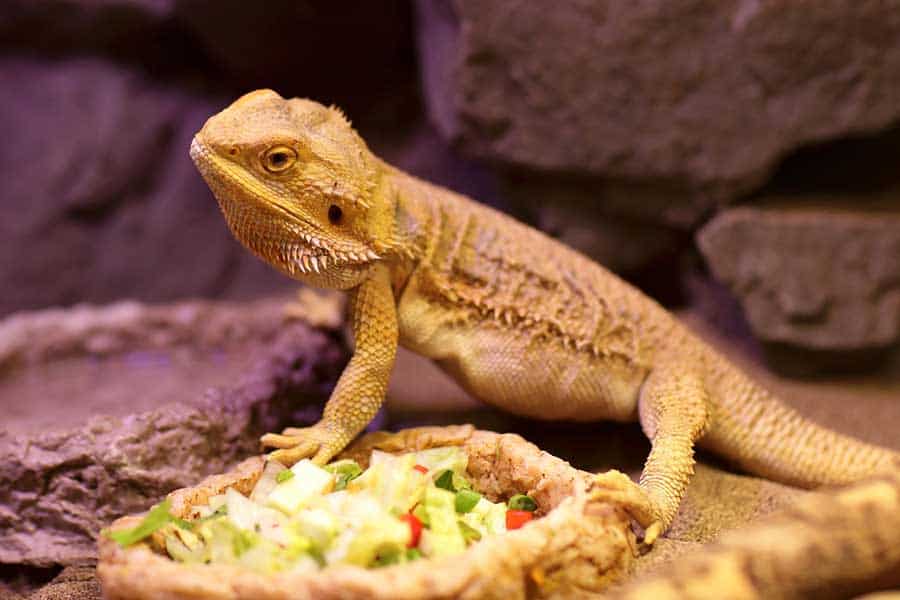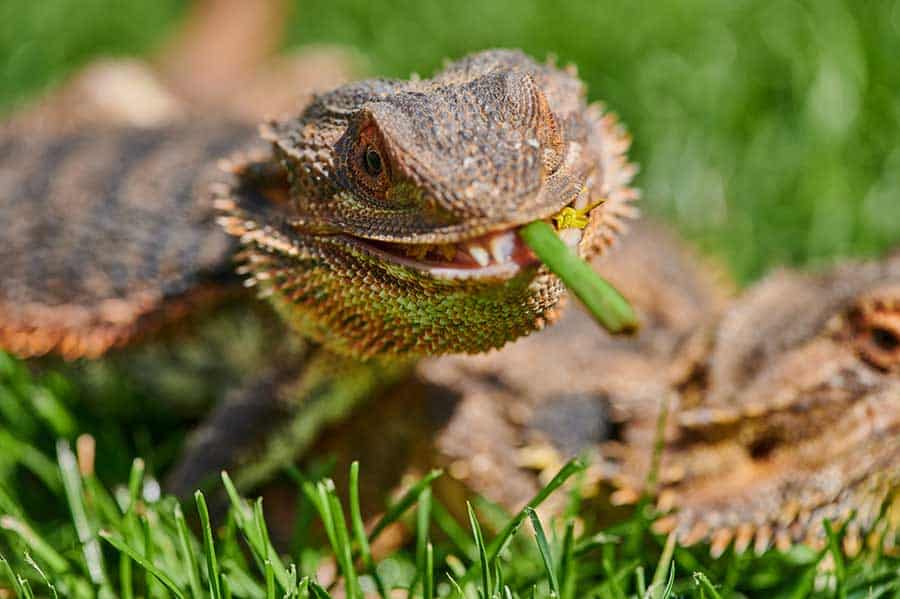Bearded dragons should have a varied diet, and what they eat will change as they age. Younger dragons should have a diet that is higher in protein than greens. However, as your scaly companion gets older, their diet should be mostly greens. So what are the best greens for bearded dragons?
Imagine only eating a single kind of green for the rest of your life. That would quickly get boring! What’s more, you may lose your interest in food altogether, and you will start lacking nutrients that other greens provide. Well, bearded dragons are exactly the same!
It is important for you to know what kinds of greens your bearded dragon can eat so you can make their food interesting and nutritionally beneficial. A diverse diet is a great way to provide enrichment for your beardie as well as ensure their wellbeing.
What Makes a Good Staple Green?
Your bearded dragon should have a daily salad that is a mix of staple greens. Each green will provide its own nutrient boost and offer its own
The acceptable calcium to phosphorus ratio is 1:1 or equal parts. However, it is always better when the
Like phosphorus, oxalates or oxalic acid also inhibit the body’s ability to absorb and process
Bearded dragons need a lot of
calcium in order to function properly and lead long and healthy lives. Therefore, feeding them greens that are too high in phosphorus will lead to various nutrient deficiencies and illnesses.
Another thing to keep in mind when selecting greens for your beardie is goitrogen content. Goitrogens are naturally occurring parts of plants that lead to impaired thyroid functioning. Greens high in goitrogens should be avoided when you are considering what food to feed your bearded dragon, as any impaired thyroid functioning will lead to serious metabolic issues.
Best Greens for Bearded Dragons: The Staples
Staple greens, as we touched on above, are exactly what they sound like: greens that will make up the majority of your beardie’s diet. These should generally be dark and rich in fiber,
Collard Greens
Collard greens are the absolute winner when it comes to being a staple green. They have one of the best
They also contain high amounts of fiber, vitamins A, C, E, and K, as well as a substantial amount of folate, which helps build healthy bones.
Dandelion Greens
Dandelion greens are generally treated as a troublesome, damaging weed and are loathed by many gardeners. However, did you know that they are one of the best things you can feed your bearded dragon?
These greens are very high in vitamin A, which is an essential vitamin for your bearded dragon to have. They have a 2.8:1 ratio for
Unfortunately, dandelion greens do have a moderate level of oxalates in them, which means they should not form the base of a salad and will need to be offered with other greens that are high in
calcium or be dusted in acalcium powder.
Mustard Greens
Mustard greens have a 2.4:1 ratio of
Unfortunately, like dandelion greens, they have moderate levels of oxalates in them. Therefore, they should not make up the primary source of greens in a daily salad.
What makes them extra special for bearded dragons is their taste! They are slightly peppery and provide a wonderful taste alternative for your bearded dragon. This promotes their interest in their food.
Endive
With a 1.9:1 ratio for
Your bearded dragon will love this addition to their salad.
Grape Leaves
Grape leaves can be hard to source unless you grow them yourself. That makes them less than desirable to include as a staple greens item.
However, what they lack in availability, they make up for in nutritional benefits. With a 4:1
Grape leaves are also very high in vitamin A and provide a unique taste that is enjoyed by most bearded dragons.
Carrot Tops
Carrot tops are easy to get hold of, taste good, provide textural enrichment, and are jam-packed with nutritional benefits!
Carrot tops are a favorite amongst most bearded dragons and have the
Cactus Pads/Prickly Pear
Cactus pads or prickly pear pads are actually a great way to provide your bearded dragon with hydration as well as a nutritionally beneficial meal.
Prickly pear and cactus pads have a tough exterior layer with spines on it. You will need to remove this and cut up the pad to pieces no larger than the space between your bearded dragon’s eyes before you offer it to them.
Prickly pear cactus pads have a 2.3:1
Occasional Greens
There are some greens that should only be offered once to twice a week in a mix with your bearded dragon’s salad. This is usually either because they are not as nutritionally beneficial as staple greens or they contain higher phosphorus, oxalates, or goitrogens than the staple greens.
However, they do add something extra to the salad, such as other beneficial nutrients, flavor, or textural differences.
Kale
Kale is very high in goitrogens. However, it is a favorite snack for many bearded dragons and is incredibly high in other nutrients.
Therefore, it should never be used as a staple item in your beardie’s salad or form a large portion of a treat meal. However, a couple of pieces in amongst other staple greens will provide your bearded dragon with a nutrient boost while mitigating some of the harm of the goitrogens.
Celery Leaves
Celery leaves are a little peppery in taste and add a great flavor to any salad no matter if you are a bearded dragon or a human! They are high in antioxidants as well as vitamin C as an added bonus!
Celery leaves have a 1.6:1
Herbs (Various)
Rosemary, basil, cilantro (coriander), and parsley are all tasty and nutritionally beneficial herbs for beardies. They are high in antioxidants, vitamins, and minerals and are wonderful additions to your bearded dragon’s meal.
If your bearded dragon won’t eat greens, try adding some of these fragrant leaves to their meal to entice them!
Keep in mind that rosemary can be a bit tough to eat, especially if you feed your beardie older leaves. Keep an eye out for softer, lighter green leaves.
All of these herbs make a delightful meal for any bearded dragon because they are tasty, have differing textures, and they smell amazing. They all also have excellent
These herbs are on this list instead of the staple list because an herb salad can become very expensive to make on a daily basis. Additionally, too many strong flavors all at once every single day can become overpowering.
Greens to Avoid
Rhubarb, all cabbages, and broccoli all contain high levels of oxalates, phosphorus, or goitrogens and do not provide any real nutritional benefits that cannot be gained from another more suitable green.
For a look at other toxic foods to avoid feeding your bearded dragon, have a look at our article about feeding bearded dragons with a section dedicated to toxic foods!
How to Get Your Bearded Dragon to Eat Greens
In general, the best way to get your bearded dragon to eat more greens is to gradually introduce them to their diet as they age. Most dragons greatly prefer insects to greens, but they can also learn to enjoy certain veggies over time.
Regardless of their age, try adding in a few pieces of greens here and there to your dragon’s meals, and always try out new types of greens to determine which your beardie prefers. All dragons have unique preferences.
If your bearded dragon is not eating in general, there may be a more serious reason. Certain illnesses and other health issues can have a significant effect on your beardie’s appetite.
Have a look at our article dedicated to why bearded dragons stop eating.
FAQs Greens for Beardies
How much greens should a bearded dragon eat?
As your bearded dragon ages, their need for green veggies will change. Young bearded dragons need a lot of protein, and this should mainly come from insects. 80% of their diet should be protein-based, while the remaining 15% should be made up of about 10% greens and vegetables and 5% fruit.
When your bearded dragon enters adulthood, they no longer need as much protein as they did when they were growing, building strong muscles, and developing their bones and organs. However, they do need all of the nutrition and
Therefore, an adult bearded dragon should have a diet that consists of around 20% insect protein, 70% greens and vegetables, and 10% fruit and flowers.
What are the best bearded dragon veggies?
There are many delicious vegetables that are good for bearded dragons. You can include the following in their daily salad:
- Bell peppers
- Orange and yellow squash
- Parsnips
- Sweet potato
- Peas
- Pumpkin
I feed my bearded dragon lots of calcium -rich greens. Do I still need to feed them a calcium supplement?
Even if you feed your bearded dragon exactly right, you will still need to augment their diet with an additional
At the Tail End of Things…
So when it comes to veggies, you can mix and match the best greens for bearded dragons — combining safe, staple veggies and occasional greens on this list to provide excitement and variety to your pet’s diet.
The greens you feed your bearded dragon should be nutritionally beneficial while also inspiring interest in their food and stimulating them mentally through texture, taste, and smell.




